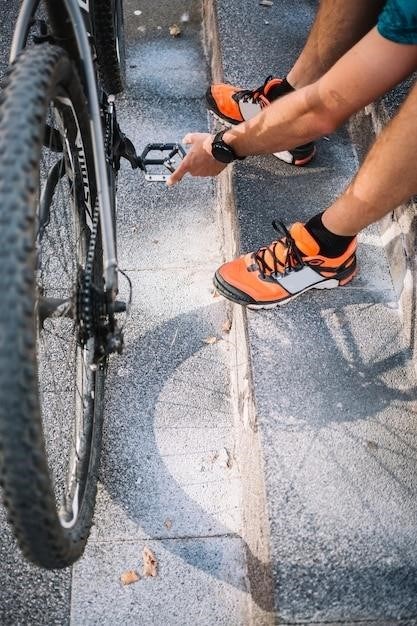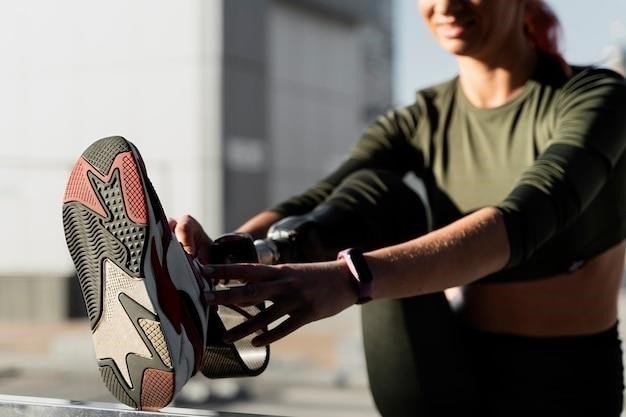Finding the right size road cycling shoe is crucial for comfort, performance, and preventing injuries. Properly sized shoes ensure efficient power transfer and a secure fit, maximizing your enjoyment on the road.
Importance of Accurate Sizing
Accurate sizing in road cycling shoes is paramount for both performance and comfort. Shoes that are too small can constrict your feet, leading to discomfort, numbness, and even hot spots. Conversely, shoes that are too large can cause your feet to slide around, reducing power transfer and potentially causing blisters. A proper fit ensures that your feet are securely positioned within the shoe, allowing for efficient power transfer and a comfortable ride. This is especially important for long rides, where discomfort can quickly become a major issue.
Measuring Your Feet
To determine the right size road cycling shoe, accurate foot measurements are essential. Start by wearing the socks you plan to wear while cycling. Stand with your weight evenly distributed on both feet and trace the outline of your foot on a piece of paper. Measure the distance from the heel to the longest toe, ensuring the measuring tape is perpendicular to the paper. Repeat this process for both feet, as they may differ slightly in size. Consider the width of your foot as well, especially if you have wide or narrow feet. These measurements will help you determine the appropriate shoe size and width.
Considerations Beyond Size
While shoe size is a crucial factor, several other considerations play a significant role in finding the perfect fit for your road cycling shoes. The width of your foot is paramount, especially if you have wide or narrow feet. Cycling shoes are often designed for a snug fit, so proper width is crucial for comfort and performance. Arch support is another important element. If you have high arches, consider shoes with built-in arch support or use custom insoles. The material of the shoe’s upper, whether leather, synthetic, or a combination, can impact breathability, flexibility, and durability. Finally, consider the type of cleats and pedals you intend to use, as different systems have varying compatibility with specific shoes.

Cycling Shoe Size Chart
This chart provides a general guide for converting your regular shoe size to popular cycling shoe brands. Remember, sizing can vary between manufacturers, so always consult the brand’s specific size guide.
Popular Cycling Shoe Brands
The cycling shoe market offers a wide range of brands, each with its own sizing nuances; Some of the most popular brands include⁚
- Shimano⁚ A leading manufacturer known for its performance and durability.
- Sidi⁚ Renowned for its high-quality Italian craftsmanship and innovative features.
- Lake⁚ Specializes in comfortable and supportive shoes, often favored by cyclists with wider feet.
- Northwave⁚ Offers a blend of performance and affordability, with a focus on both road and mountain biking shoes.
- Specialized⁚ A well-known brand in cycling, offering a comprehensive range of shoes for all disciplines.
Size Conversion Chart
Cycling shoe sizing can vary significantly between brands. To ensure the best fit, it’s crucial to refer to a size conversion chart specific to the brand you are considering. These charts typically provide conversions from standard US shoe sizes to European sizes, which are often used by cycling shoe manufacturers.
It’s important to note that even within the same brand, different shoe models might have slight variations in fit. Therefore, checking the specific model’s size guide is always recommended. Additionally, some brands offer different width options for their shoes, which can further impact sizing.
Tips for Choosing the Right Size
Choosing the right size road cycling shoe is essential for comfort and performance. Here are some tips to ensure a perfect fit.
Going Down a Size
Road cycling shoes are designed to fit snugly, unlike everyday shoes. Many cyclists find that going down half a size or even a full size from their regular shoe size provides a secure and comfortable fit for cycling. This snug fit helps prevent foot movement and maximizes power transfer to the pedals. However, it’s crucial to find a balance between snugness and comfort. If the shoes feel too tight or constricting, it can lead to discomfort and even numbness in your feet. Ultimately, the best way to determine the right size is to try on different sizes and see what feels most comfortable.
Trying On Before Buying
Whenever possible, try on road cycling shoes before buying them. This allows you to assess the fit, comfort, and feel of the shoes while wearing the socks you’d typically cycle in. Pay attention to the tightness around your toes, the arch support, and the overall feel of the shoe. Walk around in the shoes to ensure they don’t feel too constricting or uncomfortable. If you’re buying online, look for retailers with generous return policies to allow you to try on the shoes and exchange them if necessary. Remember that cycling shoes often feel different from everyday shoes, so it’s essential to test them out before making a final decision.
Returning Policy
Before purchasing road cycling shoes, especially online, check the retailer’s return policy. A generous return policy allows you to try on the shoes and exchange them if they don’t fit properly. It’s crucial to have the option to return shoes that are too tight, too loose, or uncomfortable, as cycling shoes are designed to fit snugly and may feel different from everyday shoes. Look for retailers who offer free returns or exchanges within a reasonable timeframe, ensuring you have peace of mind when making your purchase. A good return policy protects you from buying shoes that don’t meet your needs and allows you to find the perfect fit for your cycling adventures.
Additional Factors to Consider
Beyond size, several factors influence cycling shoe fit, including width, arch support, material, and cleats.
Shoe Width
Foot width plays a significant role in cycling shoe comfort. While standard shoe sizes focus on length, many manufacturers offer wider options for those with broader feet. Brands like Shimano offer E-width shoes for wider feet, while others may use sizing systems like “narrow,” “medium,” or “wide.” If you have wide feet, consider trying on a wider option or going up a half size in a standard shoe. Proper width ensures a snug yet comfortable fit, preventing pressure points and discomfort during long rides.
Arch Support
Arch support is another crucial aspect of cycling shoe fit. While some shoes have built-in arch support, others may require additional support. If you have flat feet or high arches, consider using custom insoles or arch supports to customize the fit. Proper arch support ensures a comfortable ride and helps prevent foot fatigue, especially during long rides. Experiment with different insole options to find the right level of support for your feet. Some manufacturers also offer shoes with adjustable arch support for a more personalized fit.
Material
The material of your cycling shoes plays a significant role in comfort, breathability, and durability. Synthetic materials like nylon and mesh are lightweight, breathable, and often more affordable. Leather shoes offer a more luxurious feel, excellent durability, and often a more traditional look. However, they can be heavier and less breathable than synthetic options. Consider the climate you ride in and your personal preferences when choosing material. For hot and humid conditions, breathable synthetics are ideal, while leather shoes are better suited for cooler weather. Ultimately, the best material depends on your individual needs and riding style.
Cleats and Pedals
Cycling shoes are designed to work with cleats, which attach to the bottom of the shoe and clip into pedals. These cleats allow for efficient power transfer and control, enhancing your riding experience. The most common type of cleats for road cycling is SPD-SL, which uses a three-bolt system. There are also other types of cleats available, such as SPD, which are used primarily for mountain biking. When choosing cleats, consider the type of pedals you have or plan to buy. Make sure your shoes and cleats are compatible with your pedals for a seamless and secure connection.
Finding the perfect fit is essential for maximizing performance and comfort on the road. By considering these factors, you can choose the right road cycling shoes for your needs.
Key Takeaways
Road cycling shoes often run smaller than regular shoes, so sizing down is usually recommended. It’s essential to measure your feet accurately, considering both length and width, especially if you have wider feet. Always prioritize a snug fit for efficient power transfer and stability on the pedals. Don’t hesitate to try on shoes before buying, as different brands can have varying fits. Consider factors like arch support, material, and cleat compatibility when choosing your road cycling shoes. Always consult a size chart from the manufacturer for accurate conversions and consult online resources for additional guidance; Ultimately, the best way to ensure a perfect fit is to try on different sizes and styles until you find the right pair for your feet.
Resources
For comprehensive information on road cycling shoe sizing, consult reputable online resources such as Gear Mashers, Ride Shimano, and specialized cycling shoe brand websites. These resources provide detailed size charts, conversion guides, and tips for choosing the right size. Additionally, online forums and communities dedicated to cycling offer valuable insights from experienced cyclists, sharing their experiences and recommendations for specific brands and models. Don’t hesitate to reach out to your local bike shop for personalized advice and assistance in finding the perfect road cycling shoes for your needs.
